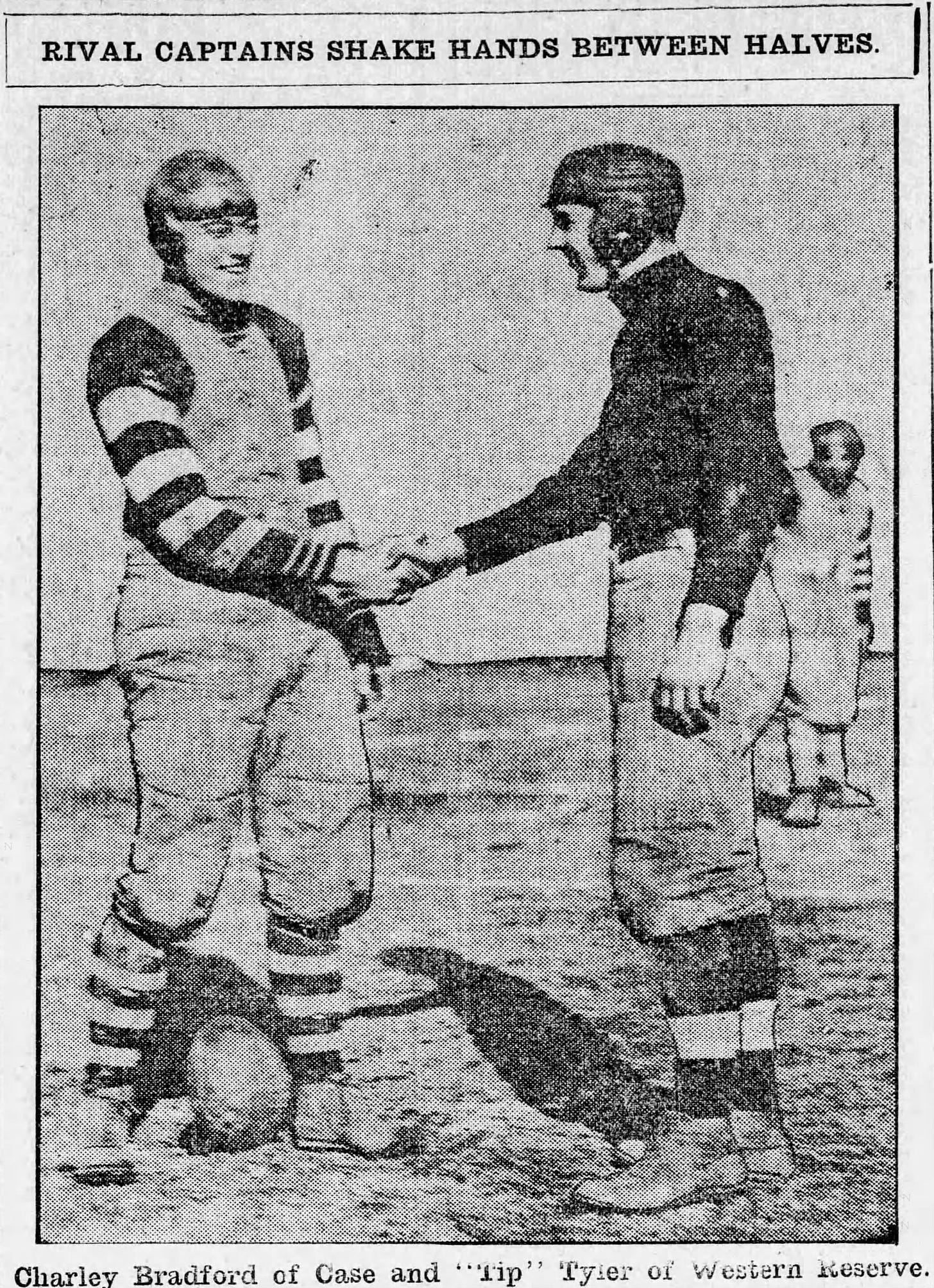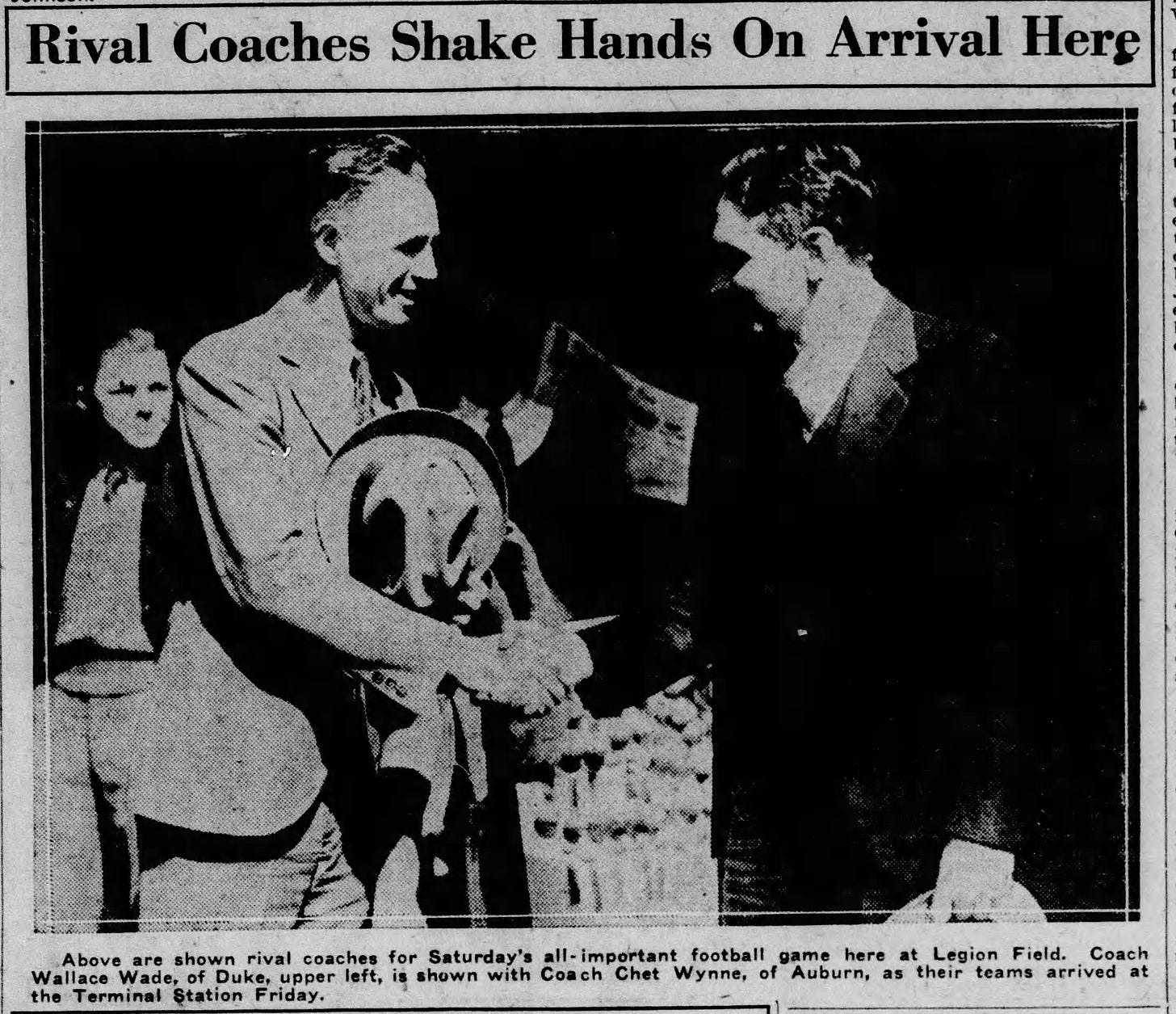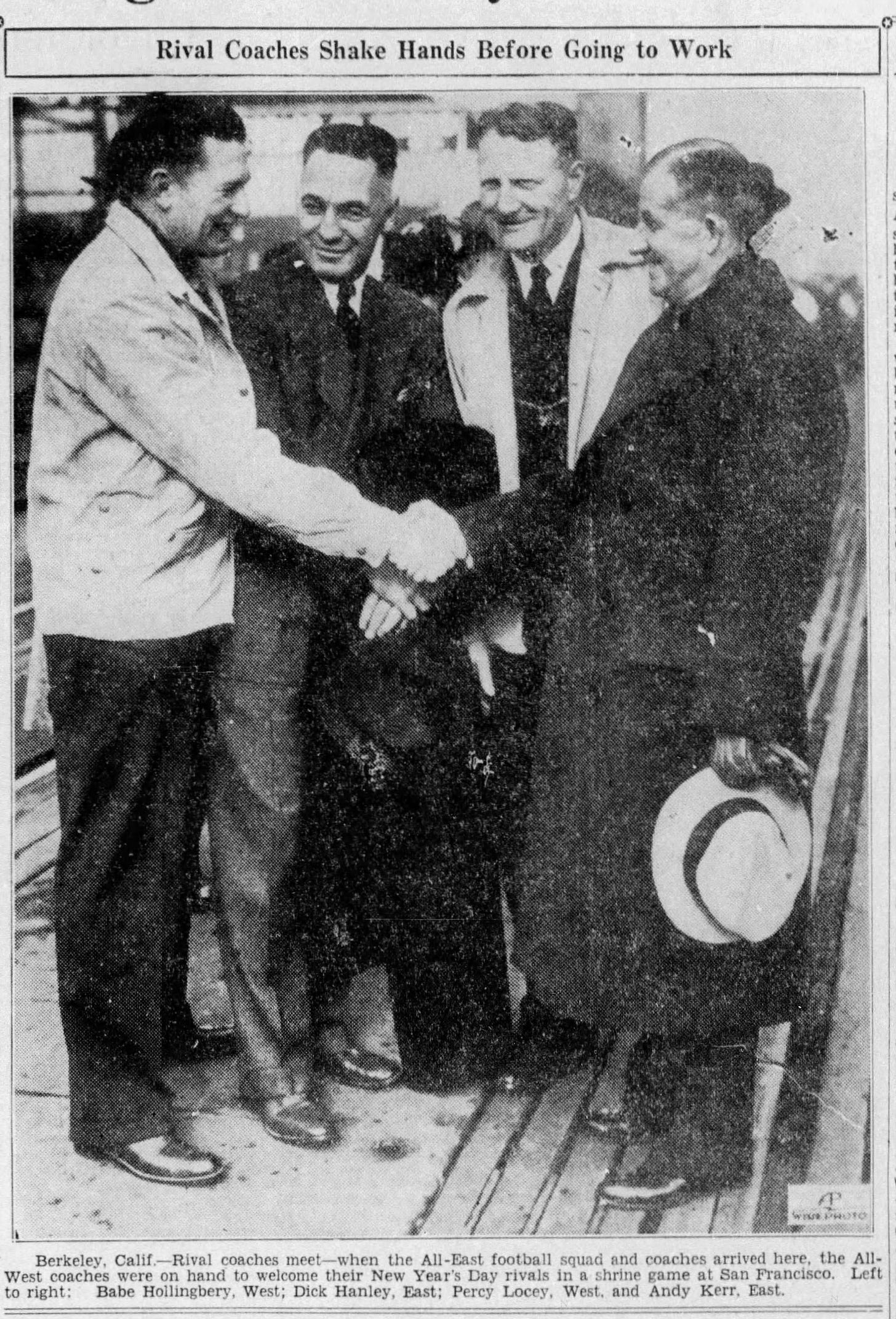Today's Tidbit... Whole Lotta Shakin' Going On
Shaking hands is a tradition that dates back to ancient times when gents wearing distinctive helmets in the Fertile Crescent shook hands to signal friendship or, at the very least, that they were not bearing arms. Some claim that modern handshaking is a democraticized form of kissing the hands of social superiors. Whatever its origins, the number of 1890s newspaper articles regarding the niceties of handshaking suggests the practice was in transition then or that the lesser classes began rubbing elbows and shaking hands with the well-born and needed to learn how to act in polite company.
Perhaps borrowed from the practice of boxers shaking hands between each round, handshakes found their way onto football fields among captains meeting at midfield for the toss up / coin toss. For the 1909 Harvard-Yale game, the captains and referee met at midfield precisely four minutes before the game's scheduled start. In contrast, the 1914 Virginia-UNC game saw the captains shake hands at midfield before heading to the Virginia bench, where the referee greeted them for the coin toss. In some instances, captains even renewed acquaintances by shaking hands again at halftime.
Captains shaking hands became standard practice and noncontroversial; the same could not be said for their coaches, who were all over the map. Some, like Bernie Bierman, were so welcoming that they met visiting teams upon their arrival at the train station and shook hands with the opposing mentor. Southern hospitality could be seen at neutral site games in Birmingham when Duke's Wallace Wade and Auburn's Chet Wynne clasped hands on the platform.
Post-season games seemed to bring out the best in coaches. They eagerly pressed the flesh before the Shrine and Rose Bowls in the late 1930s.
Coaches shaking hands on the field before and after the game was more problematic. With few exceptions, coaches gathered near midfield before the game, but post-game handshakes could be complicated due to perceived slights and curb stompings.
Texas coach Eddie Price refused to shake Notre Dame's Terry Brennan's hands in 1954, while Ohio State's Woody Hayes recommended a Big Ten rule that coaches shake on the 50-yard line after games after Indiana's Jack Mollenkopf shook off Hayes in 1958.
In the NFL, Paul Brown and Buck Shaw had their troubles, while George Halas famously refused to shake the hand of former assistant George Allen after Allen sued Halas for one thing or another. NFL coaches who seldom shook hands, especially with division rivals, included Allen, Bud Grant, and Buddy Ryan. Whether due to obstinacy, intensity, or both, they figured the handshakes were overvalued.
The informal post-game handshaking on the field after football games was a show of respect and an opportunity for old teammates to exchange pleasantries. Then, high school and youth teams borrowed from hockey to have teams greet one another along the 50-yard line beginning in the 1970s or so.
Today, some associations require post-game handshake lines, thinking they encourage good sportsmanship, but those lines have led to fights and other conflicts, so others flip the script and ban post-game handshake lines.
Click Support Football Archaeology for options to support this site beyond a free subscription.






Excellent post. I agree with Woody, never shake off a Hayes.
I recall the teams meeting midfield (longitudinally) for shakes after a game, and probably before one, came in the NFL in '82, during the players' labor strike. It was a solidarity gesture. After the strike, it evolved to what it is now--not the end of a baseball game ..